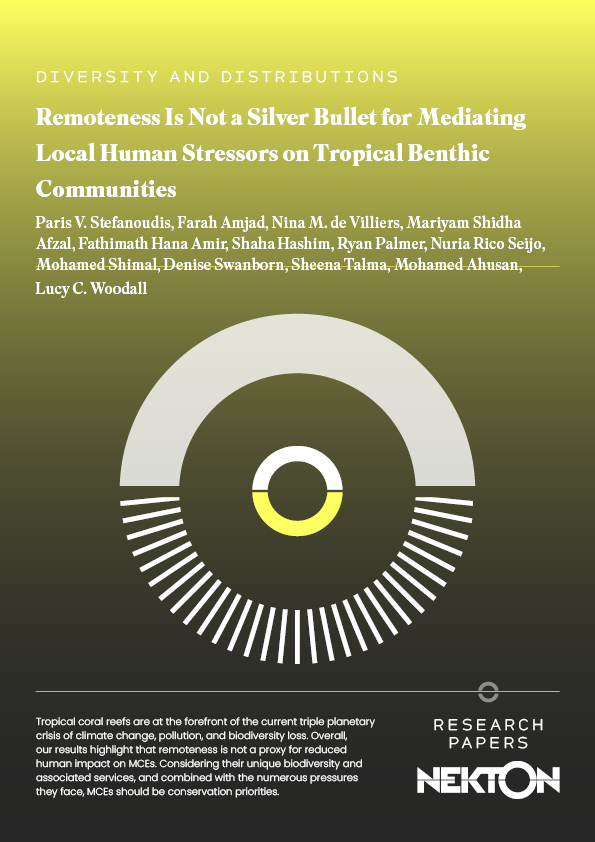Remoteness Is Not a Silver Bullet for Mediating Local Human Stressors on Tropical Benthic Communities


Tropical coral reefs are at the forefront of the current triple planetary crisis of climate change, pollution, and biodiversity loss. While geographic remoteness is considered to shield reefs from local human pressures, and potentially aid in combating adverse climate change impacts, recent evidence from shallow reefs (0–30 m) to support this hypothesis has been inconclusive. We use a holistic approach focusing on the whole shallow reef community and expanding to mesophotic coral ecosystems (MCEs; 30–150 m) and deep-sea corals (250–500 m) to test the effect of vertical (depth) remoteness.
Five coral atolls in the Maldives, central Indian Ocean, including depths from 0 to 500 m.
Firstly, we obtained benthic community characteristics (abundance, richness, community evenness) by annotating 4200 images from 105 stereo video-based transect surveys. Subsequently, we collected data on human activities and proxies thereof that could impact benthic communities, as well as other geographic and topographic parameters due to their role in shaping benthic communities. Using modelling approaches (random forests), we then combined the above datasets to assess the importance and influence of human pressure and other variables on benthic community characteristics.
We report that shallow reef benthic communities—both their abundance and richness—were higher on geographically remote reefs, and these communities were also more even. No such pattern was observed for MCE evenness, while richness was actually lower on remote reefs. Notably, MCE abundance and all deep-sea models had low explanatory power, suggesting that factors other than human pressures, such as depth and topography, are driving community patterns at our study sites, highlighting the need for holistic, multi-faceted approaches to coral reef conservation and management.
Overall, our results highlight that remoteness is not a proxy for reduced human impact on MCEs. Considering their unique biodiversity and associated services, and combined with the numerous pressures they face, MCEs should be conservation priorities.
Authors
Paris V. Stefanoudis, Farah Amjad, Nina M. de Villiers, Mariyam Shidha Afzal, Fathimath Hana Amir, Shaha Hashim, Ryan Palmer, Nuria Rico Seijo, Mohamed Shimal, Denise Swanborn, Sheena Talma, Mohamed Ahusan, Lucy C. Woodall